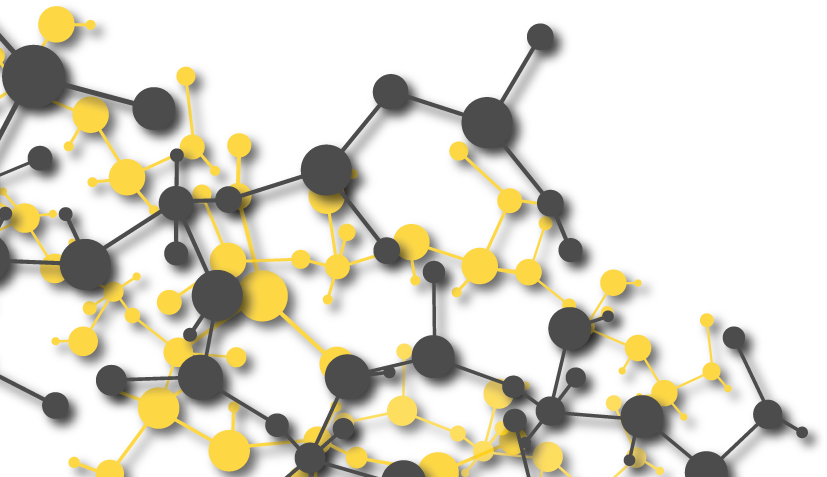Gantrade is an active participant in the water-soluble polymers market, offering high quality cellulose ether and PVOH polymers and service. Our product line of cellulose ethers includes hydroxyethyl cellulose (HEC), hydroxypropyl methyl cellulose (HPMC) and hydroxyl methyl cellulose (HEMC).
These polymers originate from renewable, plant source cellulose, which is the dominant polymer in nature. Modification by etherification chemistries produces water solubility by decreasing the crystallinity of the cellulose molecule.
Formulators employ the non-ionic water-soluble cellulose ether polymers as thickeners, protective colloids, water retention agents and rheology modifiers. Applications areas include adhesives, binders, water-based paint and coatings, building and construction products such as cement-based materials, oil field chemicals, paper & textiles, and personal care products.
As water-soluble rheological modifiers, cellulose ethers function by thickening aqueous systems and preventing the sedimentation of suspended matter. As water retention agents in cementitious formulations, they increase water-use efficiency and improve properties like workability, open-time and strength.
Advantages of Cellulose Polymer Ethers
Our cellulose ethers easily dissolve in cold water; the lower viscosity grades are more easily dissolved versus the high viscosity grades. Formulators achieve dissolution by slowly adding the cellulosic ether polymer to water with constant stirring to fully disperse the polymer and avoid agglomeration. Mild heating to 60-70 °C (140 – 158 °F) will accelerate the solution process, if the temperature is below a gel point. Note that HPMC and HEMC can show gel temperatures as low as 40 °C; the gels will disappear after cooling. Aqueous solutions of HEC are stable and do not gel at high or low temperatures. HEC has been used at temperatures up to 110 °C. for example, in deep wells.
The cellulose ether polymer solutions are non-Newtonian; solution viscosities reduce significantly at high-shear rates. Fluid viscosities rapidly increase with an increase in the polymer concentration. In the absence of shear, viscosities can be very high, based on the pseudoplastic nature of these polymers. Because the cellulose ethers are non-ionic, they are stable at high salt concentrations and do not precipitate.
The most important attributes of cellulose ether polymers include:
- Good thickening/viscosifying efficiencies
- Available in wide molecular weight and viscosity ranges
- Excellent characteristics as water retention agents
- Outstanding tolerance to dissolved inorganic salts
- Excellent solution clarity
- Low toxicity and environmentally-friendly
Applications Cellulose Polymer Ethers in Cement-Based Mortars
 Contractors use cement-based mortars or polymer-modified cements in construction as masonry materials, tile adhesives, repair mortars, grouts, flooring materials, etc. In the oil field, operators undertake cementing operations to seal the annulus after a casing string has been run into a wellbore; to seal a lost circulation zone; or to plug a well so that it may be shut-in.
Contractors use cement-based mortars or polymer-modified cements in construction as masonry materials, tile adhesives, repair mortars, grouts, flooring materials, etc. In the oil field, operators undertake cementing operations to seal the annulus after a casing string has been run into a wellbore; to seal a lost circulation zone; or to plug a well so that it may be shut-in.
Contractors use cellulose ether polymers to improve properties of mortars such as water retention, strength, consistency, workability, open time, yield point and shear thinning behavior. They also can set up a barrier to water diffusion. Strength improvements include compressive strength, tensile strength, and fracture toughness.
Water retention is a key parameter, since loss of water due to absorption by a substrate, fluid loss into a permeable substrate (as in oil field formations), or climatic conditions can result in insufficient hydration of cement and thus a decrease in the mechanical properties of the mortar, Cellulose ether polymers further promote cohesion among the cement particles and reduce segregation.
In oil field cementing operations, operators use cellulose polymers like HEC and PVOH to minimize water loss to the formation and reduce the hydraulic friction of the cement slurry. Cellulosic ethers serve as viscosifiers in workover and completion fluids, as suspending agents for proppants in fracturing fluids, and as viscosifiers and suspending agents in low-solids drilling fluids, which provide greater drill bit penetration rates and borehole stability. Operators can cleanly break the cellulosic ethers with oxidizing agents, acids, and enzymes to reverse the viscosification and suspension properties or to clean the polymer from pore surfaces.
Water-retention characteristics and consistency in cementitious formulations increase with higher molecular weight cellulose ether polymers (consistency correlates with water retention). These cementitious formulations require lower addition levels to achieve water retentions of ~ 95 % or greater when using higher viscosity cellulose ethers. Addition levels can vary from as low as 0.10 % for high viscosity cellulose ethers to as low as 0.15% for low-viscosity cellulose ethers.
HEC exhibits a higher hydration-retarding capacity compared to HPMC or HEMC. The hydrophilic hydroxyethyl ether moiety content, which is higher in HEC, mainly determines the delay in cement hydration. The methoxy moiety content (Degree of Substitution) is the key parameter influencing the hydration delay mechanism with HPMC and HEMC containing mortars. The lower the content of methoxy groups, and the high the substitution by hydoxyalkyl moieties, the greater the retardation of cement setting.
Operators typically use the cellulose ethers at a concentration of 0.4 to 3.0 % by weight of cement (BWOC) to achieve acceptable fluid loss levels. They use HEC at temperatures up to approximately 110 °C ((230 °F). HEMC is more thermally stable than HEC and is not as susceptible to oxidative degradation.
The two chemical structures below show the differences between HEC and HPMC. In the first structure for HEC, all moieties are hydrophilic hydroxyl-functional, which binds efficiently with water molecules and the surface of cement particles. The second structure shows some hydroxyl moieties capped with inert non-functional methyl groups, thus reducing the concentration of the hydroxyl functionality. Since the hydroxyl functionality on the cellulose ethers is responsible for slowing down the rate of absorption of water on the cement surface, the cement hydration kinetics are retarded. A similar situation exists with HEMC.
HEC

HPMC

When cellulose is etherified, the hydroxyl moieties are substituted with the etherifying agent ethylene oxide, propylene oxide, or methyl chloride. The average number of hydroxyls substituted per anhydroglucose (AGU) unit is known as the Degree of Substitution (DOS). With three hydroxyl groups per AGU repeat unit, the maximum DOS would be three. When ethylene oxide or propylene oxide is the etherification agent, more than one epoxide can react at an individual site. The total average number of oxide molecules that react with each glucose repeat unit is referred to as the Molecular or Molar Substitution (MS).
Typical DOS and MS values for the cellulose ether in the Gantrade product line are given in the table below:
| DOS | MS | |
| MHEC | 1.4 | 0.2 |
| HPMC | 1.4 | 0.2 |
| HEC | * | 2.5 |
*As a reference point only, the DOS for our HEC grades is estimated to be 1.6
HPMC and HEMC solutions will gel when heated, which causes a loss in water retention properties. At higher Degrees of Substitution of the hydrophilic hydroxyalkyl moiety, the water retention capability and temperature tolerance are increased, with improvements in workability and open-time. At similar Degrees of Substitution, the HEMC will exhibit a somewhat higher gel temperature than MPMC.
Cellulose Ether Product Lines
Our wide range of cellulosic ether types and viscosity grades allows the preparation of solutions with a broad range of fluid characteristics, such as thickening efficiency, shear performance (high viscosity grades show more pseudoplasticity), water retention and fluid loss control, stability, and suspension performance. The cellulose ethers join Gantrade’s line of PVOH water-soluble polymers in providing formulators with options. We often formulate both the cellulose ethers and PVOH with antifoaming agents to reduce air entrapment.
The cellulose ether polymers are available as white to cream-colored, free flowing powders.

Cellulose ethers are high molecular weight polymers. For example, HEC 300 will have a molecular weight of ~ 300,000 and HEC 10000 will have a molecular weight of ~ 720,000. Brookfield viscosities range from 250 mPa.s to over 75,000 mPa.s for a two-percent by weight aqueous solution.
Summary
Gantrade Corporation offers a wide range of cellulose ethers, including HEC, HPMC, and HEMC. These water-soluble polymers impart important properties to multiple cement based products. For construction and building products, they act efficiently as thickeners, water retention agents, rheological and green strength modifiers and suspension aids. Many processors use them as loss circulation additives, rheology modifiers, and water retention agents in oil field drilling, cementing, workover, and completion fluids. As non-ionic polymers, they are stable in high salt solutions.
Contact Gantrade today to learn more about our lineup of water-soluble cellulose ether and PVOH polymers suitable for your applications.















